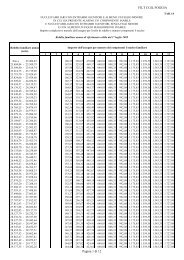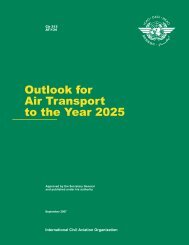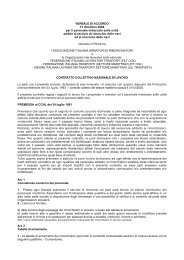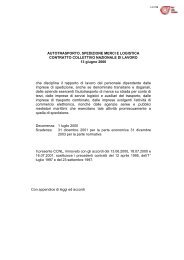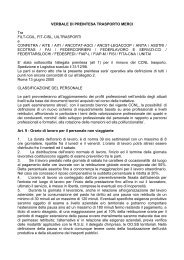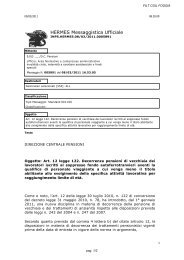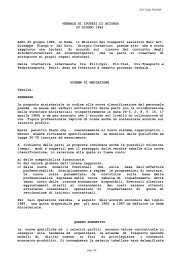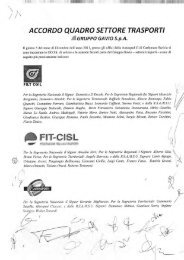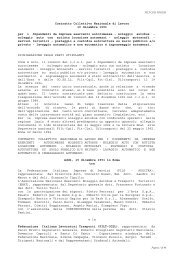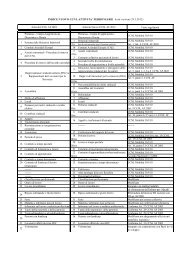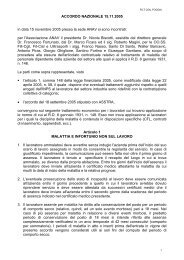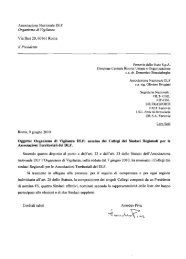Outlook for Air Transport to the Year 2015 - FILT CGIL Foggia
Outlook for Air Transport to the Year 2015 - FILT CGIL Foggia
Outlook for Air Transport to the Year 2015 - FILT CGIL Foggia
Create successful ePaper yourself
Turn your PDF publications into a flip-book with our unique Google optimized e-Paper software.
Appendix 1ECONOMETRIC MODELS OF DEMANDFOR WORLD SCHEDULED AIR TRAFFICThe basic model <strong>for</strong>m assumed was:y = a x 1b 1 x 2b 2For <strong>the</strong> model of passenger traffic:y= passenger-kilometres per<strong>for</strong>med (PKPs)x 1 = gross domestic product in real terms (GDP)x 2 = passenger revenue per passenger-kilometre in real terms (PYIELD)For <strong>the</strong> model of freight traffic:y= freight <strong>to</strong>nne-kilometres (FTKs)x 1 = world exports in real terms (EXP)x 2 = freight revenue per freight <strong>to</strong>nne-kilometre in real terms (FYIELD)The a, b 1 and b 2 are constant coefficients whose values were obtained by statistical estimation, using econometricanalysis. The b 1 and b 2 are equal <strong>to</strong> <strong>the</strong> elasticities of demand with respect <strong>to</strong> <strong>the</strong> corresponding x 1 and x 2 .Annual data were used in <strong>the</strong> estimations, covering a period of 22 years <strong>for</strong> <strong>the</strong> passenger model and 42 years <strong>for</strong><strong>the</strong> freight model. The data <strong>for</strong> <strong>the</strong> CIS are excluded from <strong>the</strong> freight model. ICAO and <strong>the</strong> IMF were <strong>the</strong> sources<strong>for</strong> <strong>the</strong> airline and general economic data, respectively, used in <strong>the</strong> models.Estimated passenger model:ln PKP = 4.63 + 1.34 ln GDP 0.58 ln PYIELD R 2 = 0.975(2.9) (1.7)Estimated freight model:ln FTK = 0.37 + 1.58 ln EXP 0.37 ln FYIELD R 2 = 0.997(21.4) (5.7)The figures in brackets are <strong>the</strong> “t” values of <strong>the</strong> corresponding coefficient estimates. The “t” value corresponding<strong>to</strong> a particular coefficient estimate is a statistical measure of <strong>the</strong> confidence that can be normally placed in <strong>the</strong>estimate.47





